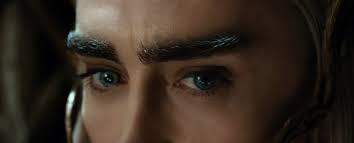Sterotypes- Media institutuions use sterotypes beacuse the audience will instantly understand them (negative).
Archetypes- This is the ‘ultimate’ sterotype. For example, the white stiletto wearing, big busted, brainless blonde bimbo.
Countertype- A representation that challenges the traditional stertypical associations of groups, people or places (positive).
Representation- The way in whihc people, events and ideas are presented to the audience.
- To break it down, the media akes something that is already there and re-presents it to us in the way that they choose.
- These representations are created by the producers(anyone who makes media text).
Who, What Why, Where
- Who or what is being represented? who is preferred audience for this representation.
- What are they doing? is their activity presented as typical, or atypical? Are they conforming to genre expecations or other conventions?
- Why are they present? What purpose do they serve? What are they communicating by their presence? What’s the prefered reading?
- Where are they? How are they framed? Are they represented as natural or atificial? What, surrounds them? What is in the foreground and what is in the background?
Encoding: The messages and ideas that are packed into a media text by the producers of that text.
Decoding: The ways in which any audience ‘unpackages’ or reads meaning into that text influenced by a range of factors.
Richard Dyer’s Typography of representation:
What?How?Who?What?
- What is represented?
- How is this representative of social groups?
- Who is responsible for the representation?
- What does the audience make of it?
Cuffs (BBC) -2013
- A police/crime tv drama by the use of the costumes, props (the police car).
- Brighton and the South East is being represented through the deck chairs, the pier, the pier sign, the south downs, the beach and the segulls.
- Social groups- different genders, through male and female police officers, different ethnicitys- white, muslim (hijab), black and different ages- youth and older people.
- Audience- broad target audience, different actors with different backgrounds (identify with), the genre is loved by many.
Countertypes in Cuffs- Black police officer, ususally seen to be the criminals.
Binarys opposites-
- Deck chairs and graffiti = rich and poor
- Housing estates and rolling hills = rich and poor
Stereotypes-
- Media representations often use sterotypes as a cultural shorthand
- Dyer argues sterotypes are a way of reinforcing differences between people, and representing these differences as natural
- Stereotypes reinforce the idea that there are big differences between different types of people
- Stereotypes legitimise inequality
The representation project
Stereotypes of old people:
- rich
- fake teeth
- burden
- bad drivers
- Forgetful
- religious
- racist
- hates the youth
- stories
- good at cooking
Decoding theory- Stuart Hall’s reception theory (positioning)
- He is a cultural theorist and Professor of sociology
Different audiences respond to representations in deifferent way, for different reasons.
Demographics-Age, Ethnicity, Class and Personal experiences (the way we respond to things)
- oppositonal – the audience strongly dislikes it/ opposes it
- negotiated- the audience is undecided, they see all the different sides
- preferred- the audience strongly excepts what you see and doesn’t question it
Skins responses:
- male and female
- older teenagers
- mixed race characters
Preferred: Some young men and women may be able to relate to this representation as they may have had similar experiences.
Negociated: Some men and women may find the sterotyping inaccurate but enjoy the show for its dark humour.
Oppositional: Some parents, OAP’S and religious groups will find this subject matter offensive as it challenges their beliefs and values.







